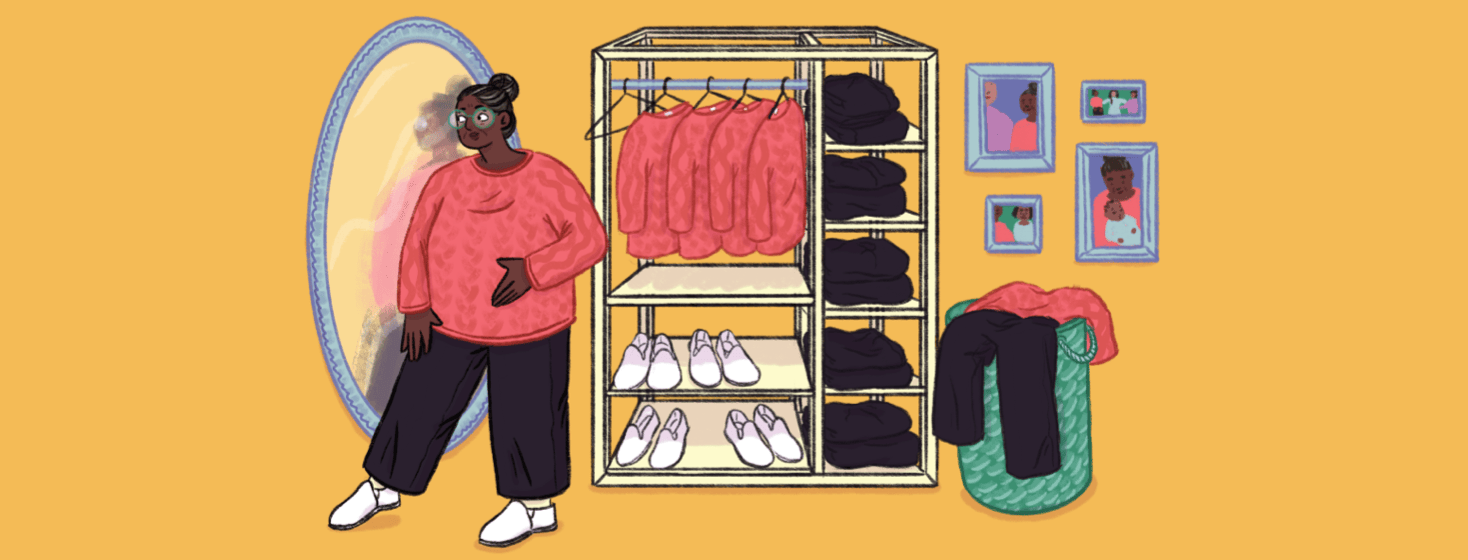When Your Loved One with Dementia Wants to Wear the Same Clothes
My mom has always been a stylish lady. Even after she was diagnosed with Alzheimer's dementia, she still enjoyed putting on makeup every day, wore matching outfits and coordinating shoes, and always finished it off with sparkly jewelry and perfume. She was fully put together even if she was going to the grocery store.
Even though I knew the day would come when dementia would take certain things away, I still wasn't prepared when Mom started wearing the same clothes every day. I started noticing that every photo I took of her featured the same pink sweater, black workout pants, and slip-on athletic shoes, even though the photos were taken on different days, even different weeks.
Adjust your expectations
How do you think through this new phase of dementia, and how do you handle it? Some people might be embarrassed by the idea of wearing the same clothes over and over. On the other hand, Alzheimer's disease education can help us rethink our expectations. The experts tell us to enter our loved one's world as much as possible.
Instead of trying to immediately change this new habit, caregivers can instead step back and ask instead: Is our person safe and healthy? If the clothes are clean, there is actually nothing wrong with wearing them repeatedly. It is only societal norms that might flag this as unusual or wrong.
If hygiene is an issue, you can help your loved one with laundry so they can continue wearing their favorite outfit and stay safe and healthy.
Reduce clothing, so there are fewer options
Too many choices can become overwhelming for those living with Alzheimer's. It can help to remove clothing from the closet and pare down the options.
My mom had a lifetime of clothes when she moved in with my family. We helped her sort through clothing that was the wrong size or seemed very old. It was washed and donated so that Mom wouldn't go through them and want to put them back in the closet. We did the same thing again when she moved into a senior retirement home a few years later.
It was hard for me to take out Mom's expensive and beautiful clothing because I worried she might want it later or start dressing up again. But she did not miss the clothes and, in fact, still had too many choices left when she started wearing her favorite pink sweater and workout pants.
Buy multiples of the favorite outfits
Let's talk about a strategy made trendy by the late Apple co-founder and CEO Steve Jobs. Remember Jobs' iconic work uniform? Levi's jeans, sneakers, and the trademark black turtleneck. He once said in an interview that he owned over 100 of the same black turtleneck in order to reduce the number of decisions he had to make every day so he could better focus on his work.
Caregivers can use this same trick. Instead of lamenting over our loved one's singular choice of outfit, why not buy multiple of them! It will make your loved one happy to have their favorite shirt, pants, or shoes and allow more time between laundry cycles.
Of course, this only works if the clothing is still available to purchase, but I was able to look up Mom's pink sweater that was bought many years ago and found it was still available at an online department store.
Rethink special occasion clothing
The first holiday season that Mom started repeating her clothing, I was dismayed to find out that she would be wearing that outfit to a special religious service.
The venue was casual and did not have a dress code, and it didn't really bother me if she wore sneakers and sweatpants. But I knew Mom had always tried to look her best at these events.
Do you honor who your loved one used to be or who they have become? I felt that, in this instance, I needed to honor the part of her that would have wanted to have dressed up but also didn't want to upset her.
I tried to find a happy medium. We kept the pink sweater, but I encouraged her to change out of the casual pants and shoes for dressier ones. Mom was hesitant at first but then agreed. Next time, I will give Mom more reminders ahead of time or go over and help her pick out the outfit.
If your loved one is resistant to changing clothes, you can also just minimize the outings that require special clothing. Most of the time, it's not necessary to force a pressure point on people living with dementia.
I knew it wouldn't be a deal-breaker if Mom couldn't attend the holiday service. If the clothing change ever gets too upsetting, we can always change our plans.
Share your experience with the community
It has been a shift for me to change my thinking as a dementia caregiver. I am trying to move more into my mom's new reality, asking if she is safe and healthy and letting some of the rest go.
How do you work with a loved one wanting to wear the same clothes? How do you balance honoring your loved one's dignity and their current preferences? We can all learn from each other, and I love to hear how other caregivers navigate these changes.
Personal hygiene definitely changes as Alzheimer's progresses. What tips have you utilized to assist a loved one? Share what has and has not work so well with the community!

Join the conversation